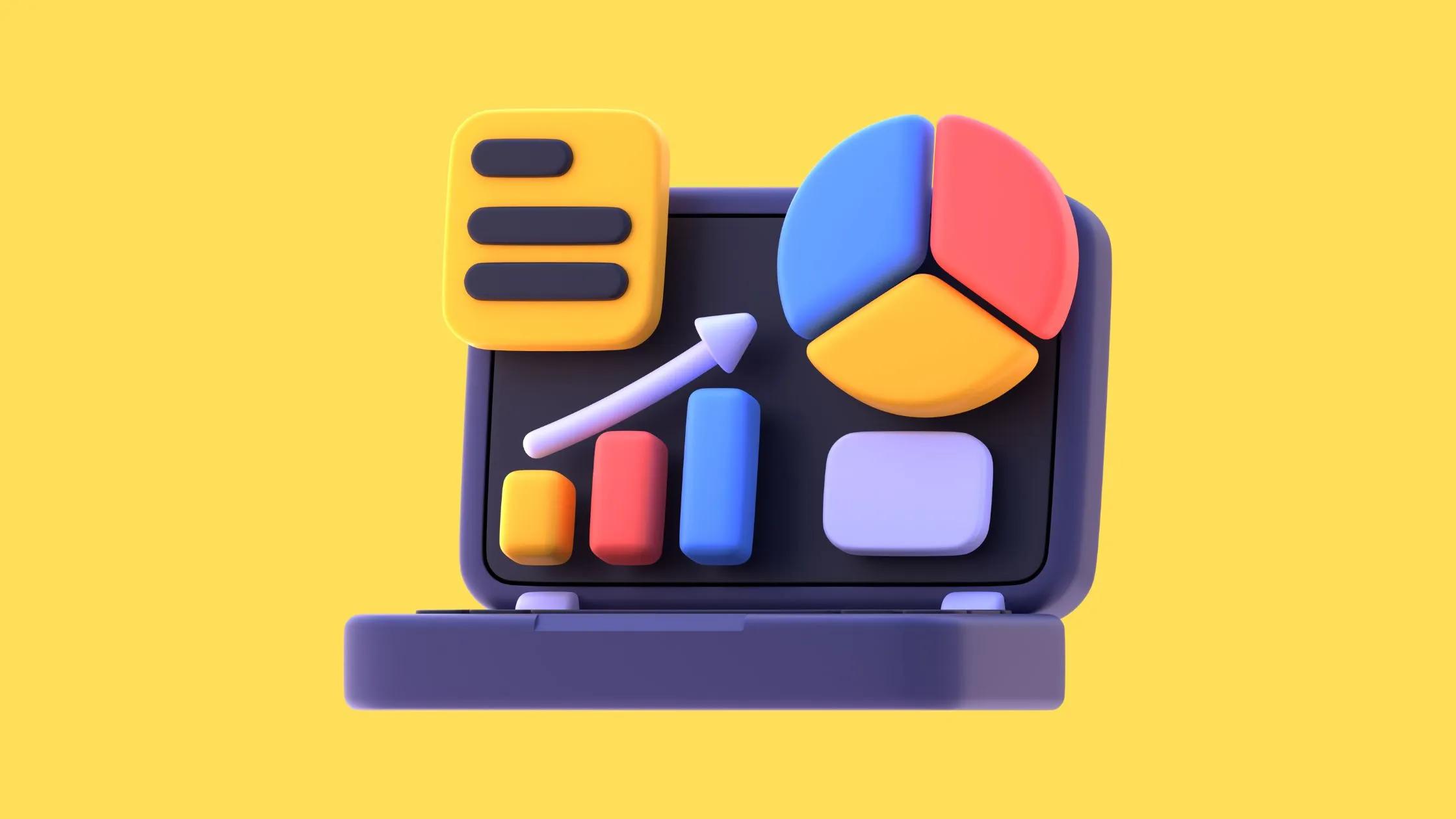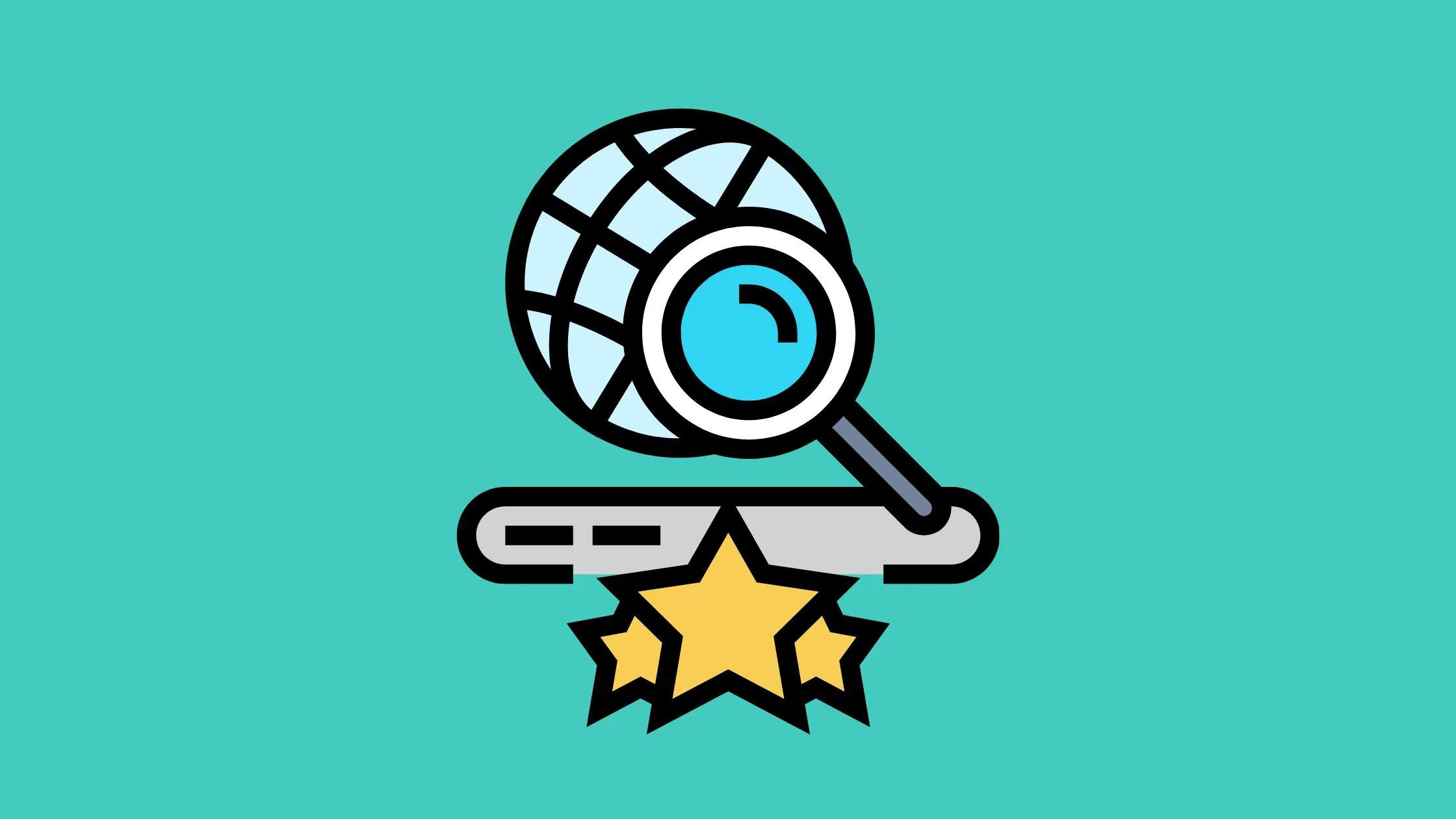
In the competitive world of online business, staying ahead of the curve is essential for success. One of the most effective ways to gain a competitive edge is through Search Engine Results Page (SERP) analysis. By dissecting and understanding SERPs, you can gain valuable insights into your competitors' strategies and uncover opportunities to outperform them. In this comprehensive guide, we'll delve into the art of mastering SERP analysis and explore strategies to propel your online presence to new heights.
Before we dive into strategies, let's first establish a clear understanding of what SERP analysis entails. A SERP is the page displayed by a search engine in response to a user's query. It typically includes a mix of organic search results, paid advertisements, featured snippets, knowledge graphs, local packs, and other elements. SERP analysis involves examining these components to glean insights into search trends, competitor behavior, and user intent.
1. Organic Search Results: The organic listings on a SERP provide valuable insights into which competitors are ranking for target keywords. Analyze their titles, meta descriptions, and content to understand their strategies and identify areas for improvement.
2. Paid Advertisements: Paid ads are another crucial aspect of SERP analysis. Take note of the ads displayed on the SERP and assess your competitors' ad copy, landing pages, and bidding strategies. This information can inform your own search efforts and help you craft more compelling organic campaigns.
3. Featured Snippets and Knowledge Graphs: Featured snippets and knowledge graphs are prominent SERP features that can significantly impact visibility and traffic. Identify opportunities to optimize your content for these features by analyzing the content and format of existing snippets. Tailor your content to match the intent and format of featured snippets to increase your chances of being featured.
4. Local Pack and Map Results: If your business has a local presence, pay close attention to the local pack and map results on the SERP. Understand the factors influencing local rankings and optimize your local SEO efforts accordingly. This may include optimizing your Google My Business profile, earning positive reviews, and building local citations.
Now that we've covered the key components of SERP analysis, let's explore some actionable strategies for leveraging these insights to outperform your competitors:
1. Keyword Gap Analysis: Conduct a comprehensive keyword gap analysis to identify opportunities for growth. Use tools like SEMrush or Ahrefs to identify keywords your competitors are ranking for but you are not. Target these keywords in your content to capture additional search traffic and expand your online presence.
2. Content Gap Analysis: Compare your content to that of your competitors to identify gaps and opportunities. Look for topics and keywords that your competitors are ranking for but you are not. Create high-quality, comprehensive content that addresses user needs and provides value beyond what competitors offer. This may include in-depth guides, case studies, or multimedia content.
3. Backlink Analysis: Backlinks are a crucial ranking factor in search engine algorithms. Evaluate your competitors' backlink profiles to identify authoritative websites linking to their content. Develop a backlink acquisition strategy to earn similar high-quality backlinks for your own website. This may involve outreach, guest blogging, or creating link-worthy content.
4. SERP Feature Optimization: Optimize your content to target SERP features such as featured snippets, knowledge graphs, and local packs. Analyze the content and format of existing SERP features to understand the user intent behind them. Tailor your content to match the intent and format of featured snippets to increase visibility and drive traffic. This may involve formatting your content in a Q&A format, providing concise answers to commonly asked questions, or structuring your content to address specific user queries.
Mastering SERP analysis is a powerful strategy for gaining a competitive edge in the digital landscape. By dissecting SERPs and uncovering insights into competitor strategies, you can identify opportunities to enhance your own online presence and drive sustainable growth. Incorporate SERP analysis into your digital marketing toolkit and stay one step ahead of the competition. With the right strategies in place, you can outperform your competitors and achieve long-term success in the ever-evolving world of online business.

In the rapidly evolving world of digital marketing, AI-based SEO is becoming a game-changer for businesses aiming to stay ahead of the competition. For digital marketers, founders, and content teams of D2C brands in the USA, leveraging AI SEO tools can transform how you approach search engine optimization, delivering efficiency, accuracy, and scalability.
This guide explores what AI-based SEO is, its benefits, and the top AI SEO tools to incorporate into your strategy in 2025.
AI-based SEO uses artificial intelligence technologies, such as machine learning and natural language processing, to optimize websites, enhance visibility, and improve rankings in organic search results. By analyzing vast amounts of data in real-time, AI provides actionable insights, streamlines processes, and identifies opportunities that manual efforts might overlook.
Manual SEO tasks, such as keyword tracking and technical audits, can take hours. AI automates these tasks, allowing teams to focus on strategic initiatives.
AI eliminates human error in data analysis, ensuring more accurate insights and recommendations for keyword usage, backlink building, and site performance.
Whether managing one site or multiple domains, AI tools scale effortlessly, providing consistent optimization for growing businesses.
AI-driven SEO prioritizes elements like page speed, mobile optimization, and content relevance, significantly improving user satisfaction and engagement.
With AI, businesses can anticipate changes in search engine algorithms, consumer behavior, and emerging keywords.
Semrush is an industry-leading tool that integrates AI to enhance keyword research, content optimization, and competitive analysis. Its features include:
This tool specializes in content optimization, combining AI and SERP analysis to create SEO-friendly articles. Key features:
OpenAI's ChatGPT transforms content creation and keyword research workflows.
MarketMuse’s generative AI SEO capabilities are ideal for content creation and strategy development. Features include:
Sangria seamlessly integrates search, content, and commerce intelligence with your brand kit to generate highly contextual, SEO-optimized, and shoppable pages. Its end-to-end automated workflow streamlines the entire process, from keyword research to content publishing, with potential for human intervention at every step. Features include:
Generative AI tools like ChatGPT, Sangria, and ContentShake are transforming how businesses approach SEO. By creating high-quality, targeted content in seconds, these tools save hours of work. They also ensure alignment with Google AI SEO algorithms by emphasizing relevance, user intent, and keyword density. These tools use advanced language models to:
When selecting the best AI SEO tools for your business, consider the following features:
AI tools should provide detailed keyword analysis, including search volume, difficulty, and intent.
Ensure the tool offers actionable recommendations to enhance on-page elements like headings, meta tags, and internal links.
Tools should automate tasks like fixing crawl errors, generating XML sitemaps, and implementing structured data.
Look for tools that provide insights into your competitors’ strategies, including backlink profiles and top-performing content.
Choose tools that offer real-time analytics and customizable dashboards to monitor performance metrics.
Choose tools that simplify the addition of structured data to web pages, improving rich snippet eligibility.
Look for tools that identify high-quality link opportunities and tracks lost backlinks for recovery efforts.
Google’s integration of AI into its search algorithms has transformed SEO. Key advancements include:
These innovations highlight the importance of leveraging AI tools to align with Google’s evolving search standards.
While AI offers numerous benefits, there are challenges to consider:
For digital marketers and D2C brands in the USA, AI-based SEO is not just a trend but a necessity for staying competitive in 2025. By leveraging tools like Semrush, Sangria, and Frase.io, businesses can automate processes, gain actionable insights, and deliver content that resonates with their audience.
As Google’s AI capabilities continue to evolve, integrating generative AI SEO strategies will be crucial for maintaining relevance and visibility. Whether you’re exploring the best AI SEO tools or wondering how to align with Google AI SEO standards, the key lies in combining cutting-edge technology with human creativity.
Ready to transform your SEO strategy? Start exploring these strategies with Sangria's SEO consulting. Book a demo now!

In the fast-paced world of ecommerce, understanding your website’s performance is crucial to staying ahead of the competition. This is where SEO analytics comes into play. By combining the power of search engine optimization (SEO) with analytics, businesses can gain deep insights into their online visibility and make data-driven decisions to boost growth. This blog will explore what is SEO analytics, why it’s important for ecommerce, and how to leverage it effectively.
SEO analytics is the process of collecting, analyzing, and interpreting data related to your website’s search engine performance. It involves tracking metrics like organic traffic, keyword rankings, bounce rates, and conversion rates to understand how well your SEO efforts are driving results.
In simple terms, SEO analytics is the integration of search engine optimization strategies with web analytics tools to monitor and enhance your site’s performance. This combination helps businesses:
By leveraging analytics for SEO, brands can refine their strategies to align with user needs and search engine requirements.
With millions of ecommerce websites vying for attention, SEO analytics helps you identify areas for improvement in your search visibility. By tracking rankings and organic traffic, you can adjust your strategies to ensure your site ranks for relevant keywords.
Analyzing user behavior on your site reveals insights into how visitors navigate your pages. You can identify bottlenecks in the ecommerce funnel and optimize your site to guide users seamlessly from discovery to checkout.
Every dollar spent on SEO should contribute to your bottom line. SEO web analytics measures the effectiveness of your campaigns, ensuring your efforts deliver a strong return on investment.
SEO analytics tools allow you to monitor competitor rankings and strategies. By understanding their strengths and weaknesses, you can refine your approach to gain a competitive edge.
Making informed decisions is crucial in ecommerce. SEO analytics provides actionable insights, from keyword opportunities to content gaps, enabling you to make strategic adjustments for better results.
To make the most of analytics for SEO, focus on the following metrics:
Measure the number of visitors arriving at your site through search engines. Increased organic traffic indicates effective keyword targeting and content optimization.
Track how your target keywords perform in search engine results pages (SERPs). Monitoring changes in rankings helps you assess the impact of your SEO efforts.
A high bounce rate may indicate irrelevant content or poor user experience. Use SEO analytics to identify and address these issues.
CTR measures the percentage of users who click on your site after seeing it in search results. Optimizing meta titles and descriptions can improve this metric.
Track how many visitors take desired actions, such as making a purchase or signing up for a newsletter. This metric directly reflects the success of your ecommerce SEO strategy.
Monitor the number and quality of backlinks pointing to your site. A strong backlink profile enhances domain authority and improves rankings.
Before diving into what is SEO analytics, define your objectives. Are you aiming to increase organic traffic, improve conversion rates, or reduce cart abandonment? Clear goals guide your analysis and strategy.
Leverage tools like:
Regularly review your site’s performance to identify areas for improvement. Look for issues like broken links, slow page speeds, or poorly optimized content.
Identify keywords with strong commercial intent to drive qualified traffic. Use an LSI keyword generator or similar tools to find related terms that enhance contextual relevance.
With Google’s emphasis on mobile-first indexing, ensure your site is fully optimized for mobile users. Analyze metrics like mobile bounce rates and page load times.
For businesses targeting specific regions, monitor local search performance. Use location-specific keywords and ensure your Google Business Profile is up-to-date.
Analyze which content drives the most traffic and conversions. Use insights from SEO web analytics to create new content or update existing pages to better align with user intent.
Shopify’s built-in analytics tools provide valuable insights into ecommerce performance, including traffic sources, sales, and customer behavior.
BigCommerce offers advanced reporting features to track SEO metrics like organic traffic and keyword rankings.
With plugins like Yoast SEO and MonsterInsights, WooCommerce users can access detailed analytics for SEO optimization.
Sangria the empowers ecommerce brands to harness the power of SEO analytics and effectively monitor the performance of the pages created by the platform. Here’s how:
Understanding what is SEO analytics and leveraging its power is essential for ecommerce success. By combining data-driven insights with strategic action, you can improve search visibility, enhance user experience, and drive higher conversions.
Investing in seo and analytics is not just a best practice; it’s a necessity for sustainable growth. Start analyzing, optimizing, and reaping the benefits of an informed SEO strategy today.

In the competitive world of ecommerce, an optimized product page can be the difference between a customer finding your product and it getting lost in the vast digital marketplace. This blog will delve into ecommerce product page SEO, highlighting actionable strategies, product page SEO best practices, and how to enhance your product descriptions to boost rankings and drive conversions.
A product description page is a dedicated webpage designed to provide detailed information about a specific product. It typically includes:
These pages are crucial in ecommerce because they are where potential customers make purchasing decisions. Optimizing these pages for search engines and users is essential for improving visibility and driving conversions.
Effective product pages SEO ensures that your product description pages rank higher in search results, attracting more organic traffic.
SEO practices like clear navigation, fast loading times, and high-quality content improve the shopping experience, leading to higher engagement and lower bounce rates.
By providing relevant and valuable information, optimized product pages guide users toward completing a purchase.
Your product title is often the first thing users and search engines see. Ensure it is:
A well-crafted meta description encourages clicks from search results. Include:
Visual content is a significant factor in ecommerce. Use:
Avoid copying manufacturer descriptions. Instead:
Add structured data to your product pages to help search engines understand your content better. Use schema markup to display rich snippets, such as:
Reviews build trust and improve engagement. They also:
A slow-loading page can deter potential buyers. Improve performance by:
With the rise of mobile commerce, ensure your product pages are mobile-friendly. Use responsive design to adapt to various screen sizes.
Link to related products or categories to:
Focus on specific phrases with high purchase intent. For example:
Use short, descriptive URLs that include primary keywords. For example:
www.yourstore.com/organic-cotton-tshirt-men
Understand what users are searching for and address their queries directly. For instance, if a user searches for "best headphones for gaming," ensure your page highlights gaming-specific features.
Guide users toward action with prominent, persuasive CTAs such as "Add to Cart," "Buy Now," or "Explore More Colors."
Answer common customer questions directly on the product page. This improves user experience and allows you to include additional keywords naturally.
Experiment with different layouts, headlines, and CTAs to find the combination that drives the most conversions.
Sangria empowers ecommerce brands by creating SEO-optimized product pages that drive organic traffic and improve conversions. Here’s how Sangria supports your product page strategy:
Optimizing your ecommerce product page SEO is a critical step in improving visibility, engagement, and conversions. By focusing on user intent, enhancing page performance, and implementing product page SEO best practices, you can ensure your products reach the right audience.
With tools like structured data, high-quality visuals, and platforms like Sangria, creating impactful product pages becomes simpler and more effective. Whether you’re looking to optimize existing pages or build new ones, a strategic approach to SEO for ecommerce product pages can make all the difference in achieving your business goals.

In the ever-evolving world of SEO, understanding latent semantic indexing (LSI) and LSI keywords is essential for creating content that ranks well and provides value to users. These concepts help search engines understand the context and relationships between words, enabling more accurate search results. This blog will explore what is latent semantic indexing, the role of LSI keywords in SEO, and how to leverage them effectively.
Latent semantic indexing (LSI) is a mathematical technique used by search engines to analyze the relationships between terms and concepts within a body of text. It identifies patterns and associations between words to understand the context of a page’s content, even when synonyms or related terms are used.
The latent semantic indexing model applies a process called singular value decomposition (SVD) to identify hidden (latent) relationships between terms in a document. By doing so, LSI creates a semantic structure that enables search engines to:
For example, if a webpage mentions "electric cars," the LSI model can infer that terms like "EV," "Tesla," or "battery-powered vehicles" are related, even if they are not explicitly mentioned.
LSI keywords are terms and phrases that are semantically related to the main keyword of a piece of content. They help search engines understand the context and improve the relevance of search results.
In SEO, LSI keywords enhance content quality by:
For instance, if your main keyword is "digital marketing," relevant LSI keywords might include "online advertising," "content strategy," or "SEO optimization."
By incorporating LSI keywords, you help search engines understand the topic of your content more comprehensively. This leads to higher rankings for relevant queries.
As part of optimizing indexability meaning, LSI keywords improve how search engines crawl and interpret your content, making it easier for pages to be indexed.
Using LSI keywords naturally prevents overusing the primary keyword, which can lead to penalties from search engines.
LSI keywords increase the likelihood of ranking for variations and related searches, expanding your content’s reach.
By addressing multiple aspects of a topic, LSI keywords make content more engaging and informative for readers.
Finding LSI keywords is a crucial step in optimizing your content. Here are some effective methods:
An LSI keyword generator is a tool that suggests related keywords based on your main keyword. Tools like LSIGraph or KeySearch are excellent for discovering semantically related terms.
Review the "related searches" or "people also ask" sections on Google to identify potential LSI keywords.
Platforms like Ahrefs, SEMrush, and Ubersuggest provide keyword suggestions that include LSI keywords. They can help you identify terms that align with your target audience’s search behavior.
Group related keywords into clusters based on themes. This method helps you identify LSI keywords that support the main topic.
Review high-ranking content for your target keyword and extract related terms that enhance contextual relevance.
Avoid forcing LSI keywords into your content. Instead, use them where they naturally fit within the text, headings, and subheadings.
Include LSI keywords in your meta title and description to increase the relevance of your content.
Use LSI keywords to provide additional context and address related subtopics. This makes your content more valuable to readers.
Anchor text for internal links is an excellent place to use LSI keywords, as it helps connect related content within your site.
Ensure that LSI keywords align with the search intent of your target audience. Addressing different facets of a topic increases engagement and satisfaction.
The integration of latent semantic indexing has transformed how search engines interpret and rank content. By focusing on the relationships between words, LSI ensures that:
Sangria empowers brands to create SEO-optimized landing pages enriched with LSI keywords, ensuring content is both contextually relevant and engaging. Here’s how Sangria supports businesses:
Understanding latent semantic indexing and the importance of LSI keywords is vital for modern SEO strategies. By using LSI keywords effectively, you can create content that ranks higher, engages users, and addresses multiple search intents. Whether you’re optimizing for index web pages, improving google indexing, or addressing mobile-first requirements, incorporating LSI keywords ensures your content remains competitive in the ever-changing digital landscape.
With tools like LSI keyword generators and platforms like Sangria, you can seamlessly integrate LSI keywords into your strategy, driving organic traffic and improving your overall SEO performance.

For a website to rank on search engines, it must be both crawlable and indexable. While crawlability determines whether search engines can access your content, indexability ensures that the content can be added to the search engine's database and appear in search results. This blog explores indexability meaning, why it matters for SEO, and how to optimize it to enhance your website’s performance.
Indexability refers to the ability of a website’s pages to be added to a search engine’s index, allowing them to be displayed in search results. If a page is not indexable, it cannot appear in search results, regardless of how well it is optimized otherwise. Search engines like Google use bots, such as Googlebot index, to crawl and evaluate web pages for potential indexing.
While closely related, crawling and indexing are distinct processes:
Even if a page is crawlable, factors like duplicate content, noindex tags, or server errors may prevent it from being indexed.
If your pages are not indexed, they cannot rank in search results, making indexability critical for improving visibility and driving organic traffic.
Search engines allocate a limited amount of resources to crawl and index your site. Ensuring efficient website indexing helps utilize this budget effectively, focusing on valuable pages.
With Google’s shift to mobile-first indexing, ensuring that your mobile site is indexable has become more important than ever. Search engines prioritize the mobile version of your site for indexing and ranking.
Indexed pages are often optimized for search intent, which aligns with delivering value to users. A well-indexed site also fosters better engagement and lower bounce rates.
Noindex Tags: These tags prevent specific pages from being indexed.
Robots.txt Blocking: Incorrect configurations can block search engines from crawling and indexing pages.
Duplicate Content: Pages with identical or very similar content can confuse search engines.
Orphan Pages: Pages without any internal links are harder for search engines to discover and index.
Slow Loading Times: Pages that take too long to load may be skipped by crawlers.
Google Search Console provides insights into which pages are indexed and highlights any errors preventing indexing. Use the Coverage Report to:
Using the URL Inspection Tool in Search Console, you can analyze whether a specific page is indexed and troubleshoot issues.
Ensure that your robots.txt file doesn’t inadvertently block critical pages. Use tools like Screaming Frog to check for blocked URLs.
A well-structured sitemap guides search engines in discovering and indexing your pages. Ensure it:
Targeting keywords with lower competition (low keyword difficulty index) can improve a page’s chances of being indexed and ranking quickly.
Use canonical tags to specify the preferred version of a page. This helps search engines avoid indexing duplicate content.
Ensure your mobile site is:
LSI helps search engines understand the context of your content. Incorporate related keywords to enhance the relevance and indexability of your pages.
Search engines prioritize unique, high-value content. Avoid thin or duplicate content and focus on answering user queries comprehensively.
Use internal links to guide search engine crawlers to important pages. Ensure anchor texts are descriptive and relevant.
Redirect chains can confuse crawlers and waste your crawling budget. Minimize the number of redirects on your site.
Fresh content signals relevance to search engines. Regularly update indexed pages to maintain their visibility in search results.
Use tools like Screaming Frog or Ahrefs to simulate how Googlebot crawls and indexes your site. This helps identify issues that could impact indexability.
Use the URL Inspection Tool to request indexing for new or updated pages. This ensures they are quickly evaluated by search engines.
Sangria empowers brands to optimize their website indexing while creating scalable, SEO-optimized landing pages tailored to user intent. Here’s how:
Understanding indexability meaning and addressing related issues is vital for achieving strong SEO performance. By ensuring that all critical pages are indexed, leveraging tools like Google Search Console, and optimizing for mobile-first indexing, you can significantly improve your site’s visibility in search results.
With platforms like Sangria, brands can efficiently optimize their indexing efforts, driving better organic traffic and maximizing the ROI of their content marketing strategies. By focusing on google indexing best practices, you ensure your website remains competitive in an ever-evolving digital landscape.

In the intricate world of SEO, crawlability plays a pivotal role in ensuring your website gets noticed by search engines and ranks well in search results. While many marketers focus on keywords and content optimization, the foundational aspect of how search engines interact with your website often goes overlooked. In this comprehensive guide, we’ll explore what is crawlability, why it matters, and how to optimize it for better search visibility.
Crawlability refers to the ability of search engine bots, often called crawlers or spiders, to access and navigate through the pages of your website. If your website is easily crawlable, these bots can efficiently discover and index your content, which is essential for appearing in search results.
Crawlability is determined by factors such as site architecture, internal linking, and server responses. It’s the first step in the search engine optimization process—if a search engine can’t crawl your website, it won’t be able to rank your content.
Search engines use automated programs called crawlers to navigate the web and discover new content. These bots follow links from one page to another, collecting data and storing it in the search engine’s index. The efficiency of this process depends on your website’s crawlability.
While crawlability and indexability are related, they are not the same. Crawlability focuses on whether search engines can access your pages, while indexability determines whether those pages can be added to the search engine’s index. Even if your site is crawlable, technical issues or restrictions might prevent it from being indexed.
If search engines can’t crawl your site, they can’t index your pages, which means your content won’t appear in search results. Ensuring good crawlability is the first step toward achieving organic visibility.
Search engines allocate a crawling budget to every website, which is the number of pages they’re willing to crawl within a specific timeframe. Poor crawlability can waste this budget on irrelevant or duplicate pages, leaving important content undiscovered.
A crawlable site is often well-structured and easy to navigate, which also enhances user experience. Good crawlability benefits both search engines and human visitors.
When your site is crawlable, search engines can quickly identify and index new or updated content, helping you stay relevant in search results.
Regularly conducting a google crawlability test or using other tools can help you identify and resolve crawlability issues. Here are some popular methods:
Google Search Console provides insights into how Google crawls and indexes your site. Use the Coverage Report to:
This tool crawls your website like a search engine bot, allowing you to:
Ahrefs offers a detailed site audit feature that highlights crawlability issues such as orphan pages, slow-loading URLs, and excessive redirects.
SEMrush’s crawl audit identifies errors that impact crawlability, including server errors, blocked pages, and broken links.
Broken links lead crawlers to dead ends, wasting your crawling budget and affecting user experience.
Solution: Use tools like Screaming Frog or Ahrefs to identify and fix broken links.
Pages blocked by the robots.txt file or meta tags can prevent search engines from crawling essential content.
Solution: Review your robots.txt file and meta tags to ensure important pages are not restricted.
A disorganized site structure can make it difficult for crawlers to navigate and discover content.
Solution: Implement a logical hierarchy with clear categories and subcategories. Use internal linking to connect related pages.
Duplicate pages confuse crawlers and dilute your crawling budget.
Solution: Use canonical tags to indicate the preferred version of a page.
Pages that take too long to load may be skipped by crawlers, negatively impacting your site’s indexability.
Solution: Optimize images, leverage browser caching, and use a Content Delivery Network (CDN).
Orphan pages have no internal links pointing to them, making them difficult for crawlers to discover.
Solution: Ensure all important pages are linked from at least one other page on your site.
An XML sitemap acts as a roadmap for search engines, listing all the important pages on your site. Submit your sitemap to Google Search Console to help crawlers prioritize your content.
Use internal links to guide crawlers and users through your site. Ensure anchor texts are descriptive and relevant.
Avoid dynamic or overly complex URLs. Instead, use descriptive, keyword-rich URLs that are easy to crawl.
Too many redirects can confuse crawlers and waste your crawling budget. Consolidate redirects and avoid unnecessary chains.
Perform regular audits using tools like Screaming Frog or SEMrush to identify and resolve crawlability issues before they affect your rankings.
Dynamic content, such as JavaScript-based elements, can pose challenges for crawlers. While modern search engines like Google can render JavaScript, it’s still a good practice to:
Sangria empowers brands to create SEO-optimized landing pages that are highly crawlable and effective at capturing organic traffic. Here’s how:
Understanding what is crawlability and optimizing it is essential for building a strong foundation in SEO. By addressing common crawlability issues and following best practices, you can ensure that search engines efficiently discover and index your content. Regularly test website crawlability using tools like Google Search Console or Screaming Frog to stay ahead of potential problems.
With platforms like Sangria, brands can optimize crawlability while creating scalable, SEO-friendly landing pages tailored to every search intent. Investing in crawlability not only boosts search visibility but also lays the groundwork for sustainable ecommerce growth.